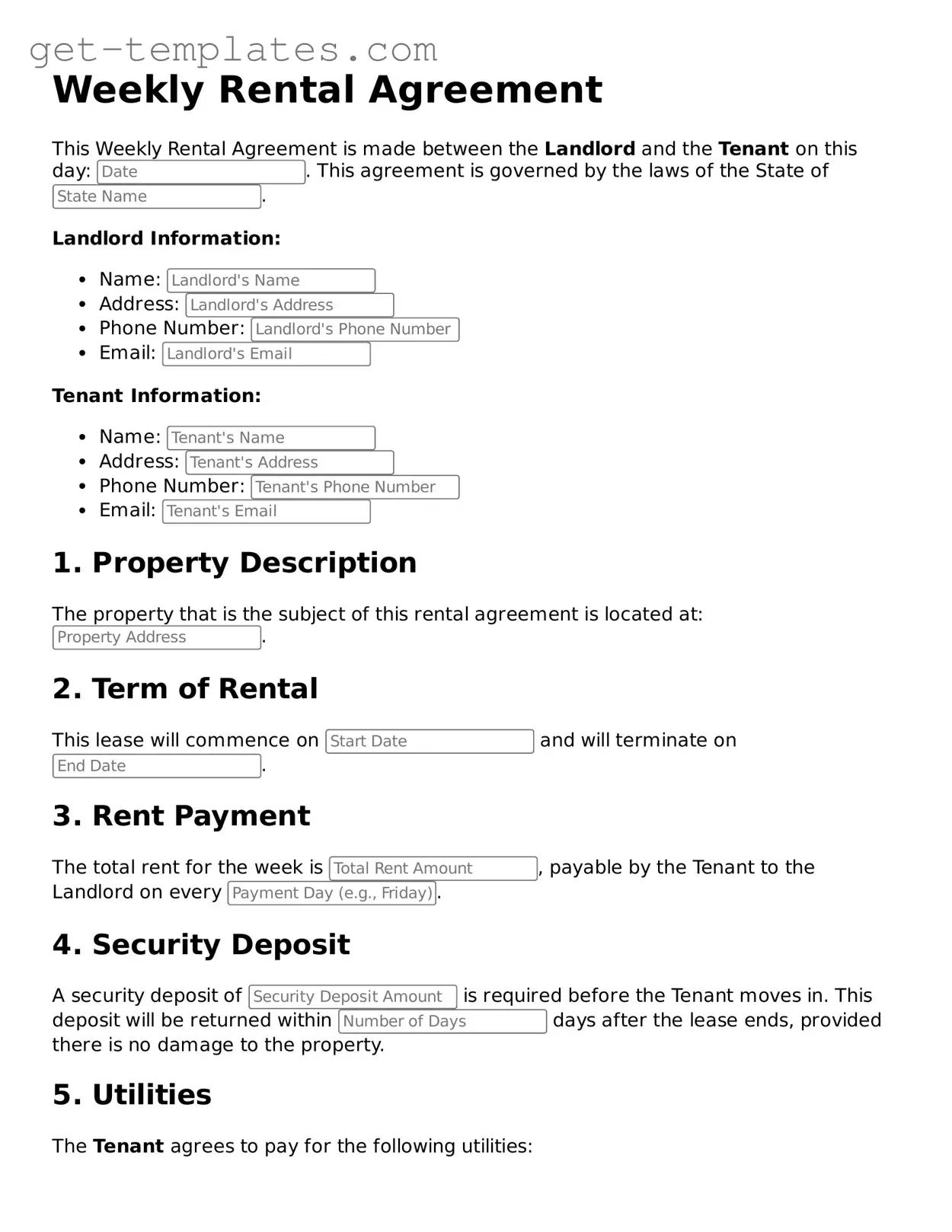Attorney-Approved Weekly Rental Agreement Form
A Weekly Rental Agreement is a legal document that outlines the terms and conditions for renting a property on a weekly basis. This agreement protects both the landlord and the tenant by clearly stating their rights and responsibilities. Understanding this form is essential for anyone involved in short-term rental arrangements.
Get Document Online
